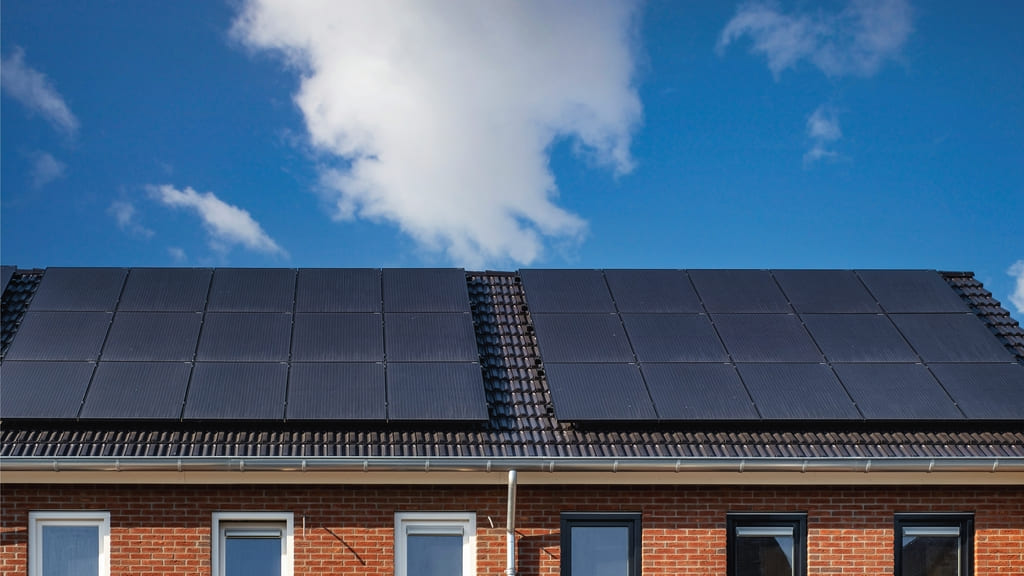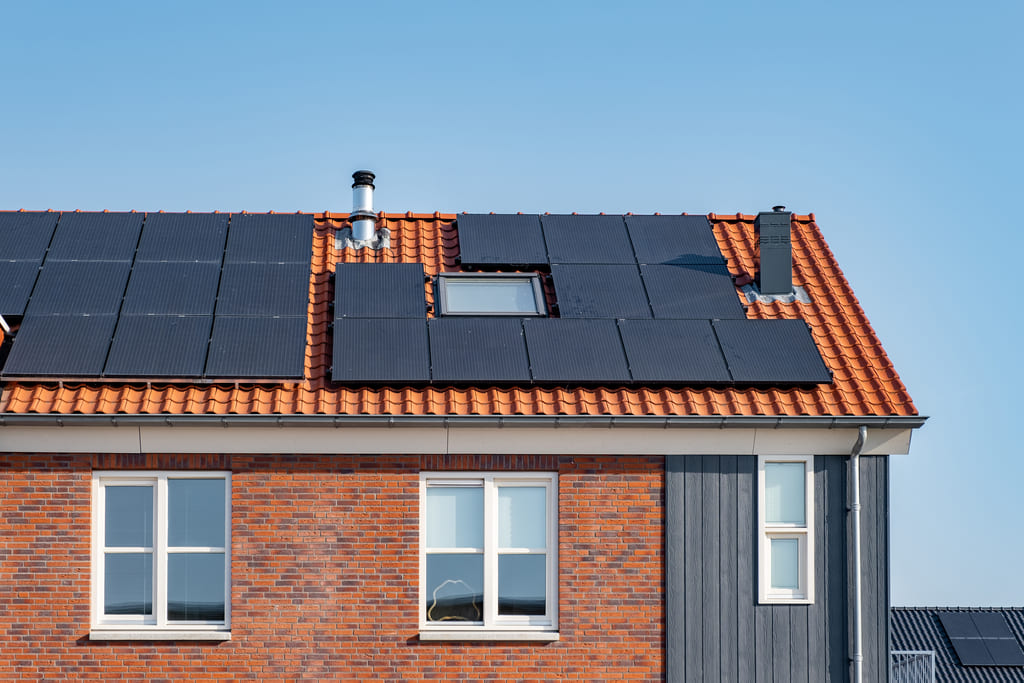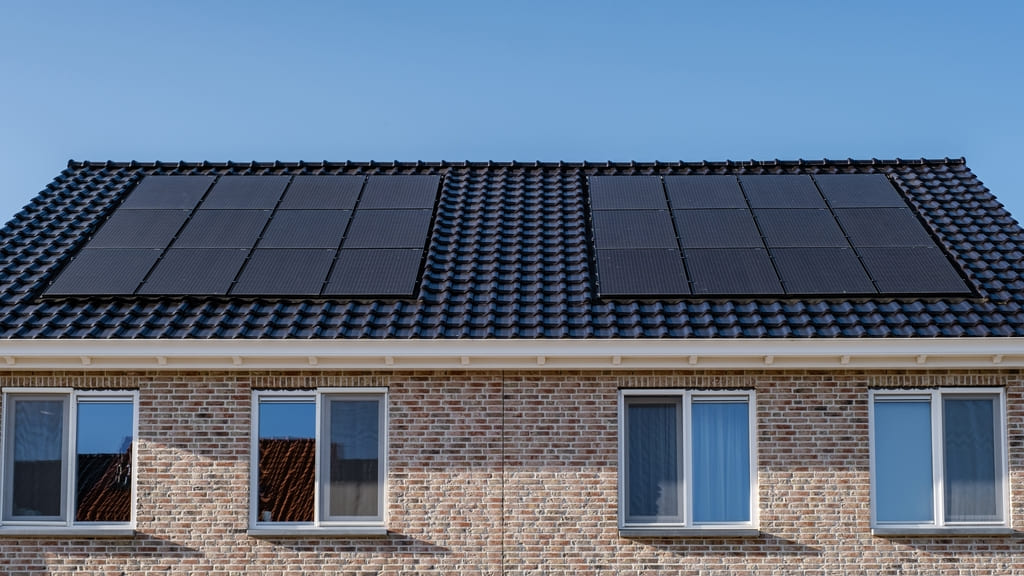In recent years, solar panel technology has seen remarkable advancements, revolutionizing the way we harness and utilize renewable energy. From the development of innovative solar panel designs to the emergence of cutting-edge materials, the landscape of solar energy has undergone a profound transformation.
In this article, we will delve into the recent innovations in solar panel technology, including the rise of bifacial solar panels, the integration of solar shingles, the advent of floating solar panels, the emergence of solar paint, and the evolution of solar windows. We will explore the different types of solar panels, such as monocrystalline, polycrystalline, and thin-film panels, shedding light on their unique characteristics and applications. We will analyze the advantages of utilizing solar panels, including their role as a renewable energy source, potential cost savings, and minimal maintenance requirements.
We will examine how these technological advancements in solar panel technology have the potential to shape the future of energy consumption and sustainability. Join us as we embark on a journey through the dynamic world of solar panel innovation and its transformative impact on our present and future.
Key Takeaways:
- Bifacial solar panels, solar shingles, floating solar panels, solar paint, and solar windows are some of the recent innovations in solar panel technology.
- Monocrystalline, polycrystalline, and thin-film solar panels are the different types of solar panels available in the market.
- Solar panels offer numerous advantages including being a renewable energy source, cost savings, and low maintenance.
- The advancements in solar panel technology have the potential to significantly impact the future of renewable energy and help combat climate change.
What Are the Recent Innovations in Solar Panel Technology?
Solar panel technology has been evolving rapidly, leading to recent innovations in the field of solar energy that promise to revolutionize the way we harness and utilize this renewable resource.
One of the groundbreaking innovations is the bifacial solar panels, which have the potential to significantly enhance efficiency by capturing sunlight from both sides. The emergence of solar shingles provides a more seamless integration of solar technology into residential and commercial structures.
Another intriguing advancement comes in the form of floating solar panels, which can be deployed on bodies of water, optimizing land use and offering a sustainable energy solution. The development of solar paint and solar windows offers the possibility of integrating solar energy collection directly into building materials, further expanding the scope of renewable energy infrastructure.
Bifacial Solar Panels
The development of bifacial solar panels has introduced a groundbreaking approach to solar energy generation, leveraging advanced technology to enhance the efficiency and output of solar cells.
These innovative panels have the capability to capture sunlight on both sides, making use of not only direct solar radiation but also reflected light, thereby significantly increasing energy production. This design allows bifacial panels to generate electricity from a larger surface area, leading to higher efficiency and improved performance. The technological advancements in the production of these panels have made them more durable and cost-effective, contributing to their growing popularity in the renewable energy sector.
Early pioneers like Edmond Becquerel laid the foundation for this revolutionary technology through their research on photovoltaic effects, paving the way for the development of modern bifacial solar panels. As the adoption of these panels continues to grow, their potential to drive sustainable power generation and reduce the environmental impact of energy production becomes increasingly evident.
Solar Shingles
Solar shingles represent a remarkable advancement in integrating solar energy technology into residential and commercial structures, offering an innovative and aesthetically appealing alternative to traditional rooftop solar panels.
These cutting-edge shingles seamlessly blend with standard roofing materials, harnessing the sun’s energy through embedded photovoltaic cells. Their installation involves sustainable building practices, promoting environmentally friendly construction methods and reducing dependence on non-renewable energy sources.
GAF Energy, a prominent industry leader, has been instrumental in driving the evolution of solar energy solutions by designing shingles that not only generate power but also harmonize with the architectural aesthetics of buildings, all while serving as a critical component in addressing climate change.
Floating Solar Panels
The concept of floating solar panels has opened new frontiers in the utilization of solar energy, with applications ranging from floating solar farms to the potential for space-based solar power generation.
The advantages of floating solar panels are multifaceted. They make use of abundant water surfaces, reducing land usage and potential conflicts with agriculture or urban development. The cooling effect of the water enhances the efficiency of the solar panels, resulting in increased energy generation. These installations help to minimize evaporation from reservoirs or lakes, supporting water conservation efforts.
Organizations like Ubiquitous Energy are pioneering innovative technologies to maximize the potential of floating solar panels and are driving advancements in sustainable energy solutions. Future prospects indicate that floating solar panels could play a significant role in expanding renewable energy sources and fostering sustainability on a global scale.
Solar Paint
The emergence of solar paint as a technological breakthrough holds the potential to transform diverse surfaces into solar energy-harvesting assets, presenting a futuristic solution for sustainable power generation.
This innovative approach has the capability to revolutionize the integration of solar energy systems into everyday objects, such as buildings, vehicles, and even clothing. The concept has been under the spotlight for its potential to expand renewable energy sources, addressing climate change concerns and reducing reliance on non-renewable energy.
Stanford University, with its cutting-edge research in advanced materials, has played a significant role in the development of this technology by exploring the properties of solar paint and its application in various environments. Companies like ROSI have been at the forefront of bringing this concept closer to reality by investing in scalable production and commercial deployment of solar paint products.
Solar Windows
The integration of solar technology into windows has ushered in a new era of energy-efficient building solutions, with solar windows offering a dual purpose of natural light transmission and renewable power generation.
The innovative design of solar windows facilitates the seamless harnessing of solar energy without compromising the aesthetics of the building. These windows are equipped with photovoltaic cells that efficiently convert sunlight into electricity, contributing to the overall energy efficiency of the structure.
The synergy between solar windows and energy storage solutions, such as the Tesla Powerwall, enhances their ability to provide consistent and sustainable power supply, further reducing reliance on traditional grid-based electricity. This advancement not only minimizes the carbon footprint but also contributes towards building sustainability.
What Are the Different Types of Solar Panels?
Solar panels come in various types, each with unique characteristics and applications, including monocrystalline, polycrystalline, and thin-film solar panels, all contributing to the diverse landscape of solar energy solutions.
Monocrystalline solar panels are made from a single continuous crystal structure, offering high efficiency and durability, making them suitable for residential and commercial installations. On the other hand, polycrystalline panels are composed of multiple silicon crystals, providing a cost-effective alternative with slightly lower efficiency levels. Thin-film solar panels use layers of photovoltaic materials, offering flexibility and lightness, allowing for unique applications like curved surfaces and portable solar devices.
Monocrystalline Solar Panels
Monocrystalline solar panels exemplify a high-efficiency solar energy solution that has gained prominence for its sustainable attributes and contributions to mitigating the impacts of climate change.
These solar panels are characterized by their use of monocrystalline silicon, which allows for higher efficiency in converting sunlight into electricity. This key feature provides a greater power output compared to other types of solar panels, making them an ideal choice for both residential and commercial applications. Monocrystalline panels have a long lifespan and require minimal maintenance, contributing to their overall sustainability. In addition, they are recognized for their aesthetically pleasing appearance, making them a popular choice for architects and homeowners looking to integrate renewable energy solutions into their designs.
Polycrystalline Solar Panels
Polycrystalline solar panels have emerged as a versatile and effective technology for harnessing solar energy, offering renewable power generation capabilities and advancements in efficiency.
These solar panels are made from silicon, with multiple crystals creating a less uniform appearance compared to monocrystalline panels. The University of Tokyo has been a key contributor to the research and development of these panels, focusing on enhancing their efficiency and durability. Their applications range from residential to industrial, with their cost-effectiveness making them a popular choice in the renewable energy sector.
The steady evolution of this technology continues to support the shift towards sustainable power generation on a global scale.
Thin-Film Solar Panels
Thin-film solar panels represent an innovative approach to solar energy technology, offering flexibility, lightweight design, and applications in diverse settings such as the Heroldsberg Solar Farm.
These panels are distinct from traditional crystalline silicon solar panels as they are made using a thin layer of photovoltaic material, such as amorphous silicon, cadmium telluride, or copper indium gallium selenide (CIGS). This unique construction allows them to be highly adaptable, suitable for curved or uneven surfaces, and even semi-transparent installations, expanding the potential for solar electricity generation in unconventional or restricted spaces.
Further, their lightweight nature makes them ideal for portable applications, including in wearable technology, consumer electronics, and integration into building materials, providing solutions for energy generation in areas with limited space.
What Are the Advantages of Using Solar Panels?
Utilizing solar panels offers a range of advantages, encompassing their role as a renewable energy source, cost-saving benefits, and minimal maintenance requirements, contributing to the sustainable use of solar energy.
Solar panels play a crucial role in reducing reliance on conventional energy sources and mitigating the impact of climate change. Their renewable nature addresses the growing demand for sustainable energy solutions, leading to a significant reduction in carbon emissions. The cost-saving benefits of solar panel deployment are profound, providing long-term financial advantages through reduced electricity bills and potential incentives or rebates from government initiatives and utility companies. This, combined with their low maintenance requirements, makes solar panels an attractive investment for individuals and businesses, aligning with sustainability goals and environmental stewardship.
Renewable Energy Source
Solar panels serve as a significant contributor to the global pursuit of renewable energy sources, offering sustainable power generation capabilities, exemplified by projects like the Dezhou Dingzhuang Floating Solar Farm.
Their pivotal role in addressing the climate change crisis is evident as they harness the abundant sunlight to produce electricity without emitting harmful greenhouse gases. Their contribution to environmental sustainability is noteworthy, as they reduce reliance on non-renewable resources, paving the way for a cleaner, greener future.
The efficiency of solar panels has also improved over the years, making them a viable and attractive option for both residential and commercial power generation. Notable projects worldwide are driving the advancements in renewable energy, showcasing the immense potential of solar energy in shaping a more sustainable and eco-friendly energy landscape.
Cost Savings
The deployment of solar panels offers substantial cost-saving benefits by reducing reliance on traditional energy sources, leveraging renewable solar energy solutions, and advancing efficiency through innovations like AI integration.
Not only do solar panels provide significant reductions in electricity costs over the long term, but they also contribute to environmental sustainability by harnessing clean and renewable energy. The advancements in technology integration, such as AI, enable solar panels to enhance their efficiency, leading to increased energy output and optimal performance. This means that the use of solar panels not only offers financial advantages but also strengthens the overall sustainability of energy production and utilization.
Low Maintenance
Solar panels offer the advantage of low maintenance requirements, aligning with sustainability goals and showcasing the long-term benefits of minimal intervention in solar energy systems, as evidenced by insights from sources like Nature.com.
With minimal moving parts and no need for frequent repairs, solar panels are a sustainable choice for energy production. Their low-maintenance characteristics not only reduce the operational costs but also contribute positively to the environment by minimizing the need for regular maintenance activities that may have potential impacts.
The environmental sustainability and long-term viability of solar panels have been well-documented in research and industry reports, emphasizing the importance of embracing renewable energy solutions with minimal intervention requirements to mitigate the environmental effects of traditional energy sources.
How Can Solar Panel Technology Impact the Future?
The evolution of solar panel technology holds immense potential to shape the future, driving advancements in sustainable energy solutions, addressing climate change, and fostering innovation through cutting-edge developments like quantum solar cells.
As the world increasingly focuses on transitioning towards clean and sustainable energy sources, solar panel technology has emerged as a significant player in this transformative journey. The rapid improvements in efficiency and cost-effectiveness of solar panels have not only made it a viable alternative to traditional energy sources but have also paved the way for a more resilient and sustainable energy infrastructure.
Innovations such as quantum solar cells have further bolstered the potential of solar technology, offering enhanced energy conversion capabilities and paving the way for a new era of renewable energy.
Frequently Asked Questions
What is the purpose of exploring innovations in solar panel technology?
Exploring innovations in solar panel technology allows us to continuously improve and enhance the efficiency, reliability, and cost-effectiveness of solar energy. It also helps us to stay ahead of the curve and adapt to the changing needs of the solar industry.
What are some current innovations in solar panel technology?
Some current innovations in solar panel technology include bifacial panels, floating solar arrays, and solar skin technology. Bifacial panels can absorb sunlight from both sides, while floating solar arrays utilize water bodies for installation. Solar skin technology allows panels to blend in with the surrounding aesthetics.
How do innovations in solar panel technology improve efficiency?
Innovations in solar panel technology can improve efficiency by increasing the amount of sunlight absorbed, reducing energy loss during conversion, and extending the lifespan of panels. This results in a higher energy output and cost savings for consumers.
What role does research and development play in exploring innovations in solar panel technology?
Research and development plays a crucial role in exploring innovations in solar panel technology. It allows for the testing and improvement of new technologies, as well as the development of more efficient and durable materials for solar panels.
How do innovations in solar panel technology impact the environment?
Innovations in solar panel technology have a positive impact on the environment by reducing carbon emissions and reliance on fossil fuels. They also minimize the environmental footprint of solar panel production and installation.
Are there any challenges in exploring innovations in solar panel technology?
Yes, there are challenges in exploring innovations in solar panel technology. Some of the challenges include high costs of research and development, technological limitations, and regulatory hurdles. However, these challenges can be overcome with continued investment and collaboration within the industry.



